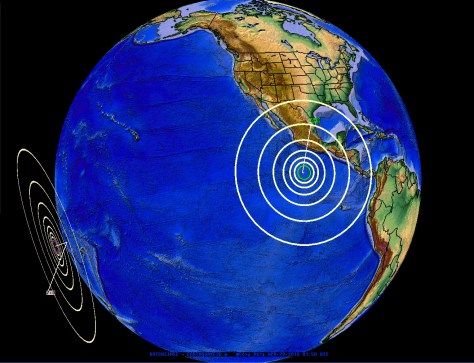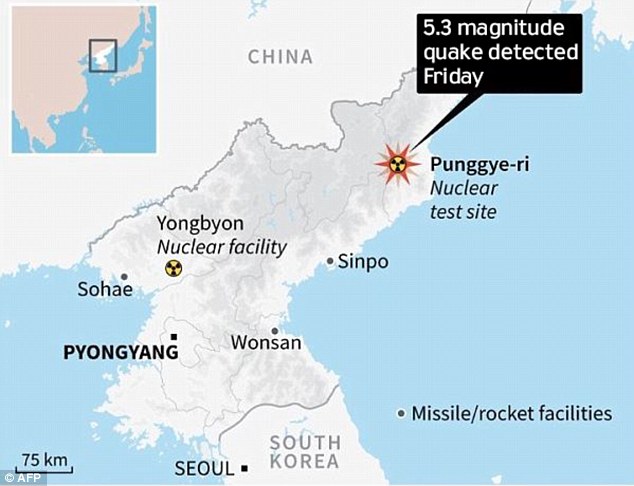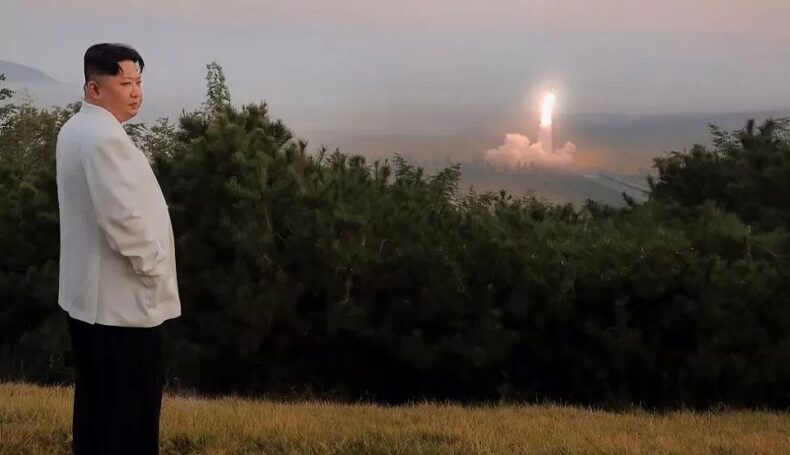After worries over their exposure to the North’s nuclear tests, South Korea will give radiation testing to 881 North Korean defectors. The decision is anticipated to be a move to neutralize the nuclear impact on the country’s citizens.

Image of Punggye-ri, the location of North Korea’s nuclear test, as seen from space. Image from Reuters.
It occurs as a result of a study that forewarned residents living close to Punggye-ri, the main nuclear test site, that they will be exposed to radioactive leaks in water.
Up to 500,000 residents are at risk, according to the Transitional Justice Working Group (TJWG). Those in China, South Korea, and Japan may also be impacted.
The group, an organization that was founded in Seoul in 2014 by activists and scholars from South Korea, North Korea, the US, the UK, and Canada, examined open-source intelligence and data for its most recent study. The most potent of the sources was the data from six nuclear tests conducted at Punggye-ri. North Korea was the last conducted to one in 2017.
Even though tests were safely done, scientists have long expressed concern that radioactive material might have leaked into the nearby soil and groundwater.
Scientists have not been able to recognize the unfamiliar illnesses that North Korean defectors who once resided nearby have reported to be witnessing.
Officials in Seoul are inviting all North Koreans who fled the area from adjacent towns to be checked for radiation indications.
Although they believe it will be challenging to estimate its magnitude, nuclear specialists confirmed that there could be a possibility of nuclear contamination.
In 2019, the Ministry of Unification, a government agency in South Korea that works to promote Korean reunification, stopped testing defections for radiation exposure.

According to the group’s report, nine out of the 40 defectors tested in 2017 and 2018 had “worrying levels” of genetic abnormalities. The TJWG identified higher radiation doses for those who displayed more anomalies, even though it did not explicitly link these to radiation exposure.
Since people are increasingly drinking groundwater, the TJWG highlighted the leakage of radioactive elements into groundwater as a significant concern.
According to data from the 2008 census in North Korea, a sixth of households in the province of North Hamgyong, where Punggye-ri is situated, use groundwater for both drinking water and agricultural purposes.
This percentage most likely increased as a result of the nationwide persistent electricity shortage. Even in Pyongyang, the nation’s capital, which is usually given priority in resource allocation, electricity is only provided on a sporadic basis.
Kim Jong Un, the leader of North Korea, has intensified the country’s weapons program and has stated that his nation’s nuclear weapons were no longer only intended to prevent war but could potentially be deployed offensively and preemptively to win a war.
“The leaders of North Korea have attempted to divert attention from its human rights problems to increase world interest in the country’s nuclear capability. In reality, there is a propensity to see the nuclear issue with North Korea primarily from a security standpoint” according to TJWG reports.
According to independent energy journalist Chris Cragg, North Korea is relatively new to nuclear testing, unlike the US and Russia, who carried them out in the early going.
“The extraordinary thing is that North Korea keeps boosting its tests as a political gesture rather than a technical one, to keep telling the world that it has the technology. Because they are aware of how these bombs truly operate, the rest of the world has mostly stopped testing them.”
The high radiation dosages in the defectors reported by TJWG – almost 100 times the global average of natural background radiation – are likely to raise the risk of cancers in people exposed, according to Mark Diesendorf, an energy policy researcher at the University of New South Wales.
Yet he questioned the methods used to calculate or estimate those doses.
He pointed out that radiation cannot be effectively contained by underground tests.
According to Scott Snyder, a senior fellow for Korea studies at the Council on Foreign Relations, the history of nuclear tests around the world has shown a “very consistent correlation between radiation exposure and public health impact on nearby communities.”

He went on to say that it is “not surprising” that North Korea would underestimate or ignore the health and environmental effects.
The smuggling and trafficking of agricultural, marine, and North Korean specialties like pine mushrooms from regions adjacent to Punggye-ri, according to the TJWG, may also put neighboring nations like South Korea, China, and Japan at risk.
The group criticized these governments for not doing enough to protect their people from these threats. It was also highlighted that the South Korean government had faced criticism in 2018 for allegedly not radiation-testing pine mushrooms that Moon Jae-in, the country’s then-president, had received as a gift from Kim Jong Un and distributed to roughly 4,000 elderly families.
Additionally, it claimed that Chinese authorities had done nothing to prevent the smuggling of agricultural and marine products from North Korea into China or another nation. The group has pushed the South Korean and Chinese governments to release the findings of earlier radiation exposure testing. Additionally, it demands a global investigation of the radiation threats to the neighborhood of Punggye-ri.













